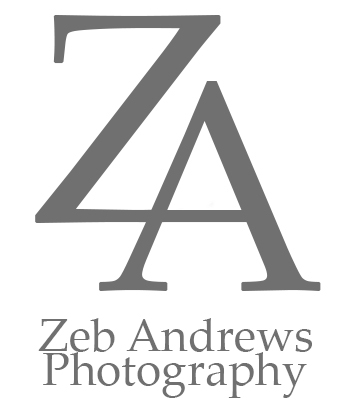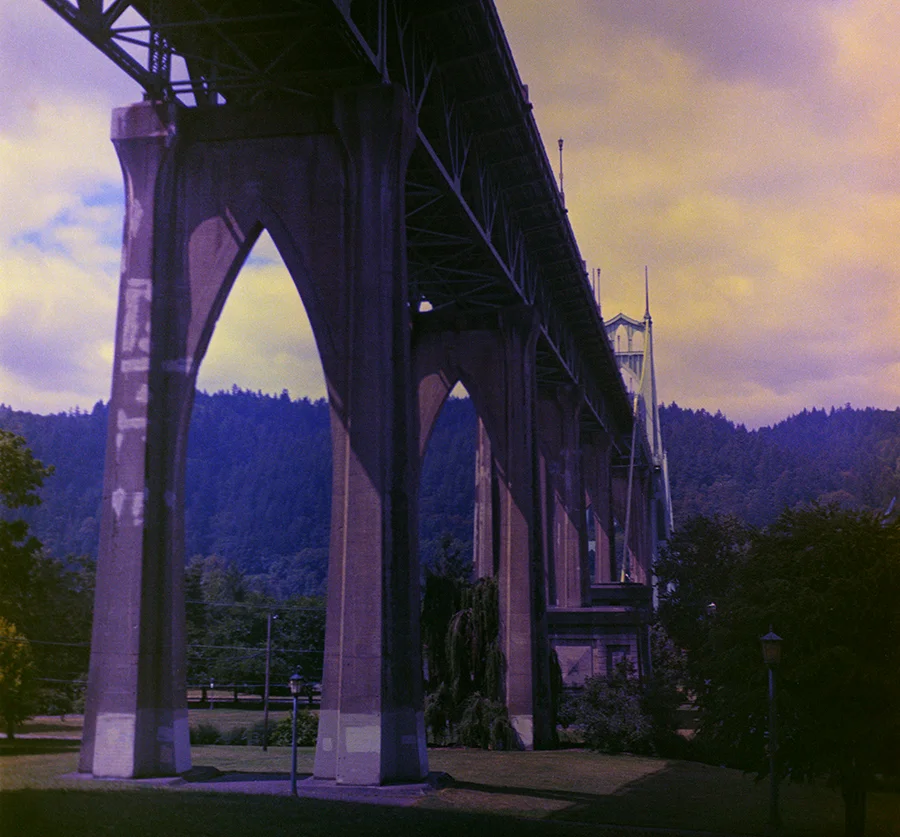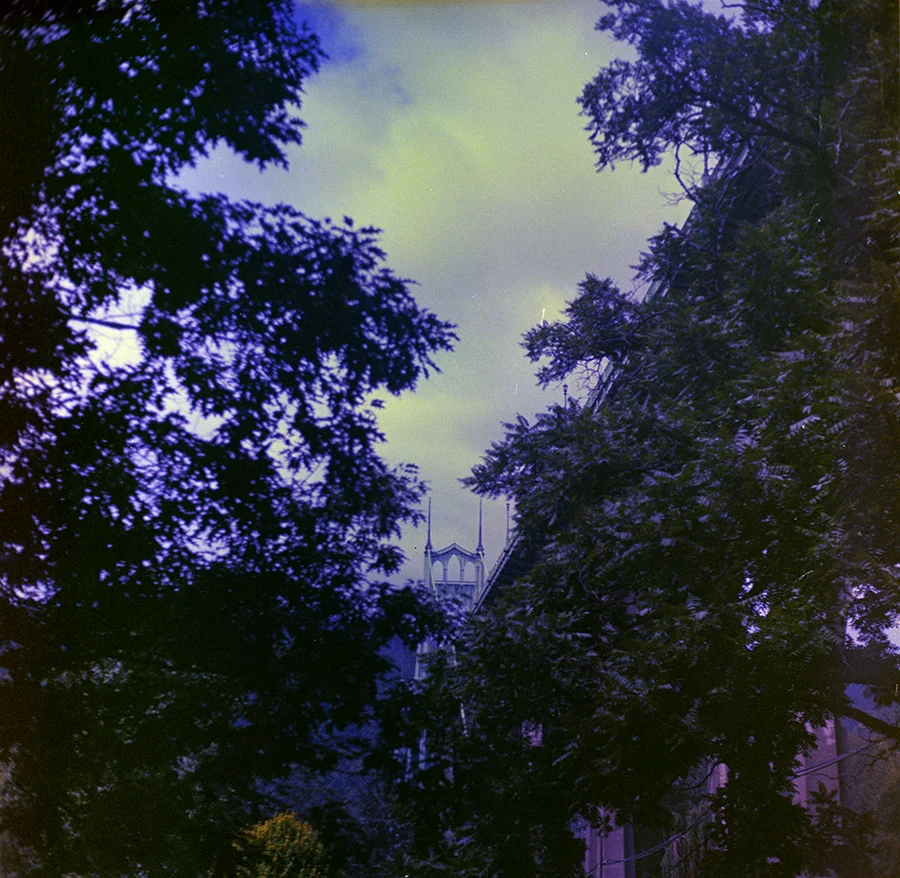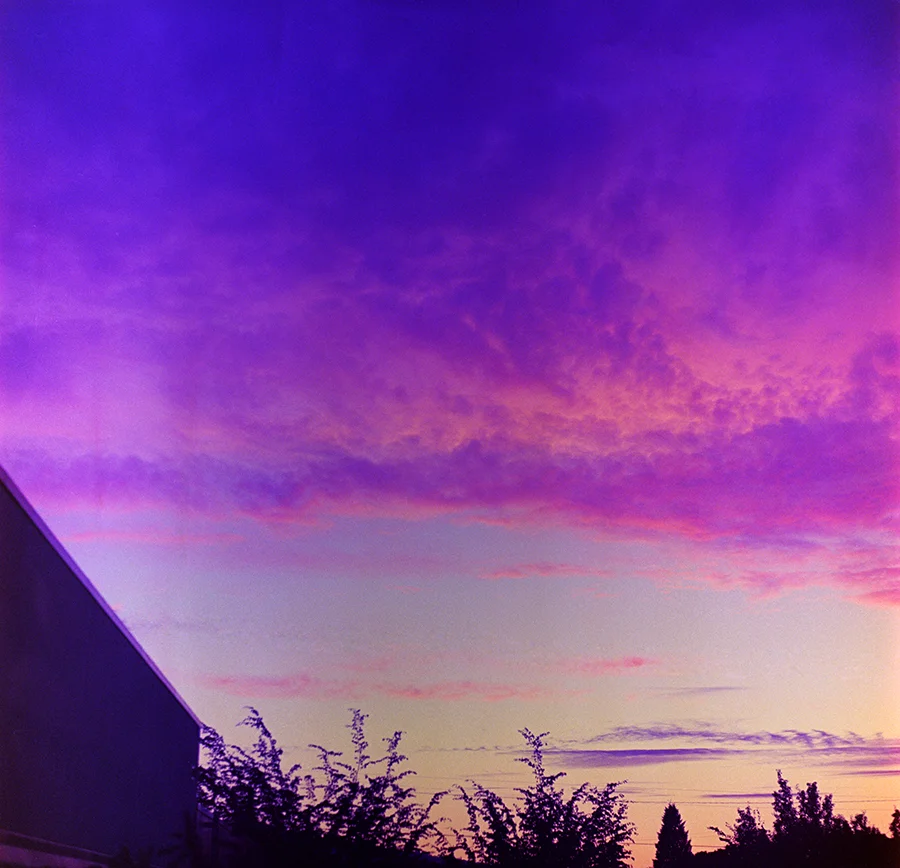I work with some pretty creative people.
In case you don't know this about me, my day job is at a camera store/film lab here in Portland, Oregon called Blue Moon Camera and Machine. I have often written about the benefits of working in a camera store when it comes to all the cool photographers you meet as customers. But I work with some really passionate photographers as well. One of them, for instance, has recently took it upon himself to figure out how to color process old C-22 film.
For those unfamiliar with C-22, it was the precursor to the modern C-41 process which is used to develop present day color negative film. C-22 was discontinued as a process between 1972-1973. Unfortunately you cannot process all that leftover C-22 film in today's C-41 chemistry as bad things will happen to both the film and the machine that is developing it (take my word for it, don't try it). There are two reasons for this. The first is that the old C-22 films had very soft emulsions and the developing process used a hardener to compensate which is not present in the C-41 chemistry. The second reason is that the modern C-41 process runs a lot hotter than C-22 did, so combine the extra high temperature with the lack of a the chemical hardener and C-22 film has a tendency to melt in the C-41 developing. There are ways to work around these issues though and people have done it. There are a couple of labs out there that offer C-22 color processing as a service but you can count them on one hand.
Well, Ian - the aforementioned co-worker - has made the case for bigger hands I guess. He is our darkroom tech at work (one of them at least) and he has been putting a lot of effort in these past couple of years specializing a developer for old b&w films to help minimize base fogging caused by age. We worked on a large project of film for the Rescued Film Project called Rescued Paul and that sent hundreds of rolls of old b&w film through our darkroom. He got a lot of experience perfecting a developer to help bring the best images out of some really questionable film (ever try developing Peromnia film?). He has carried that over now to old color films. Additionally, during a recent attic cleanout at work we found this bag of Kodak Ektacolor Type S film in 220. Who knows when this stuff expired, sometime between 1960 and the early 70s. Plus it has been stored in Blue Moon's non-air conditioned attic for years. So I figured, what the heck, I hadn't done anything fun photographically that week so I grabbed the bag of film, got a roll into a nearby Yashica Mat-124 G and decided to see what me and the film could do. The film was originally ISO 80, so I rated it at ISO 4 (roughly a stop per decade expired) and worked my way through the 24 exposures. Then I handed it over to Ian, the dark wizard, to see what he could do with it. I wasn't expecting much so it is safe to say what he produced really blew me away. I wish I had a picture of the negatives because they actually look close to a healthy orange color in the film base. Usually old film tends to take on a brownish tint to its orange and gets dark as the film base accumulates base fog. But this film almost looked normal, at least at a glance. The images themselves have some pretty stupendous color shifts (these examples are slightly corrected, mind you, but still pretty close to the straight scan). But wow, there is a color image off film over 40 years old. I was and am impressed.
Of course Ian isn't content to stop there. He wants to do better.
The next thing I knew I had a wishlist of chemistry to go out and find for him. It was everything he needed to fully recreate not only the C-22 process, but the ECN-2 process as well as some sort of two-part C-41 developer he wants to try on old C-41 film. I can sort of follow along chemically with what he is doing but certainly not all the way and it is fun to see him make leaps of deduction into areas that are dark to me. It makes for an exciting time.
There is a lot that goes on at my job in terms of the behind-the-scenes effort and investment. I am lucky to work with such a passionate and creative crew. I am sure that not everyone can say the same, so I try to appreciate how fortunate I am in that regard. I think it is also noteworthy that I have been with Blue Moon for almost 16 years now and I can still see stuff that blows my mind and widens my scope of the world of photography.
So what's next out of the darkroom? Not much at the moment as they are trying to keep pace with a sudden uptick in b&w processing. We just got in several dozen rolls from a photographer who has been working on a year-long project with the Oregon ballet. But my shipments of chemicals to fill out Ian's shopping list just arrived and I still have three rolls of this Ektacolor unexposed. So things are cooking.
All images made with:
Yashica Mat-124 G
Kodak Ektacolor Type S
Developed and scanned at Blue Moon Camera and Machine.
When at work during a nice sunset, climb up on its roof and expose 40 year old film.



